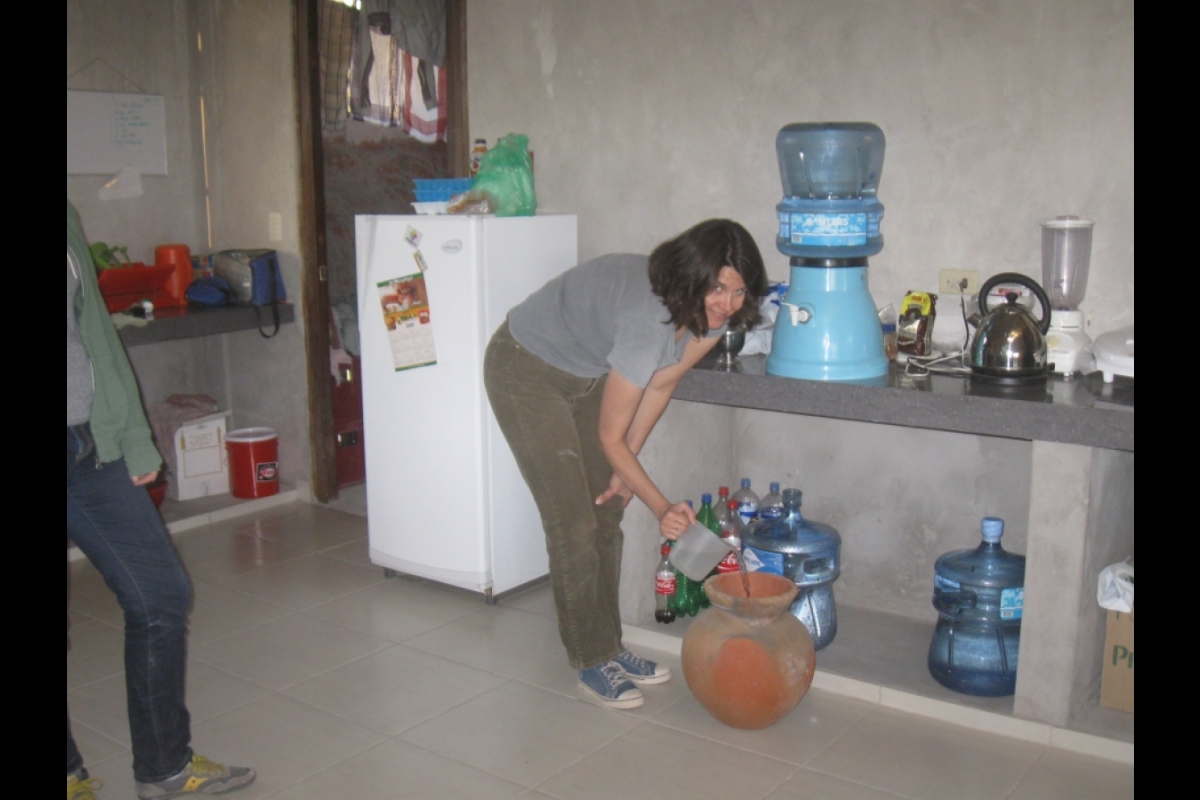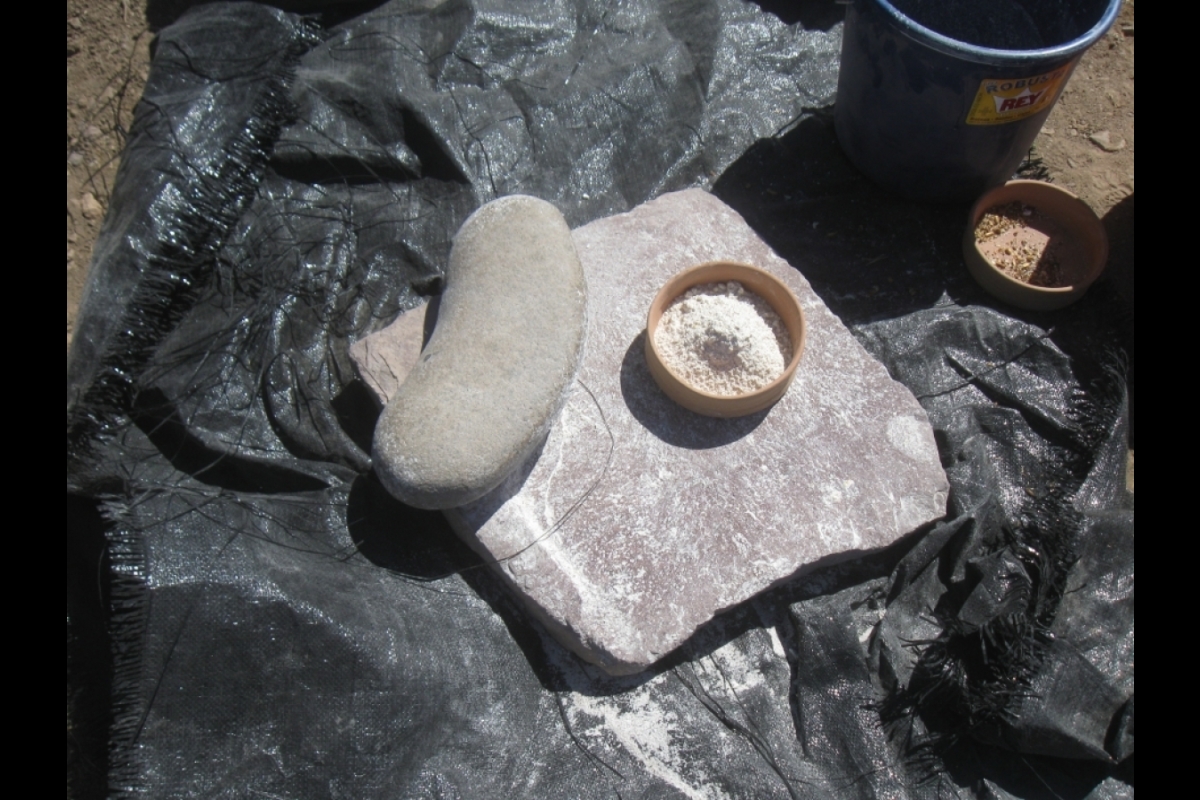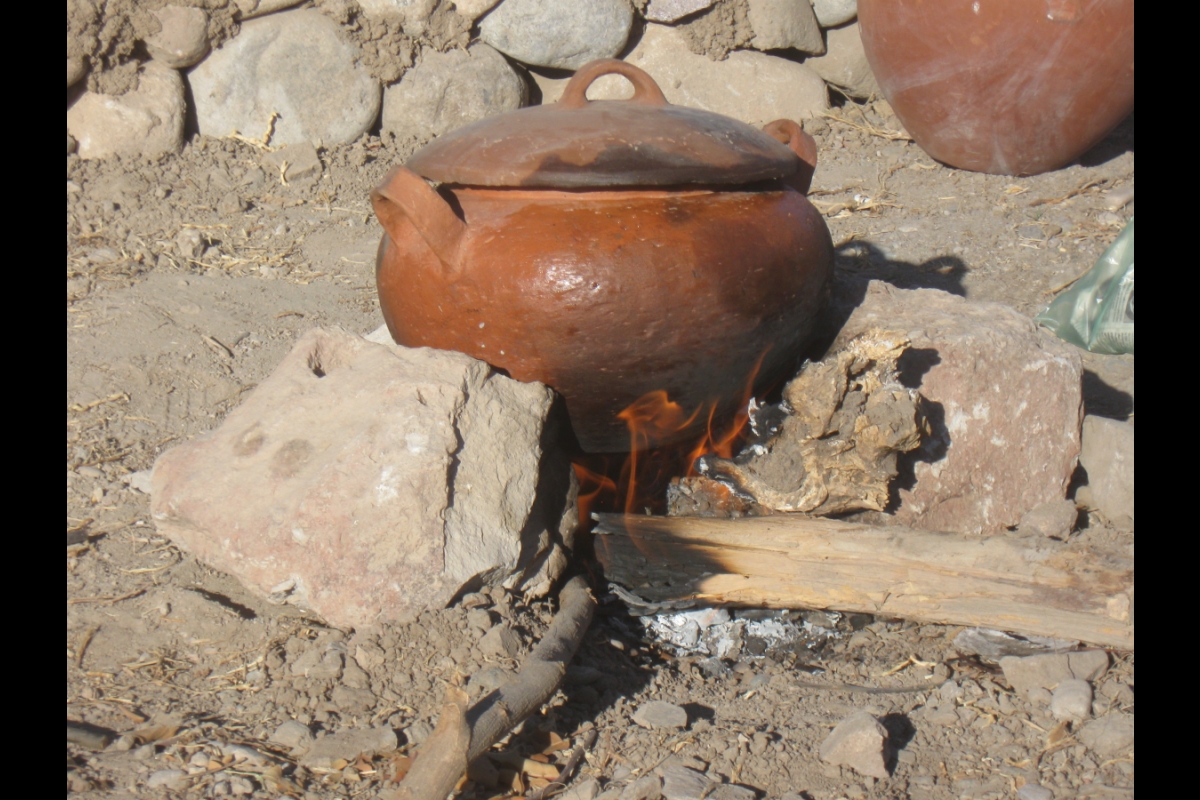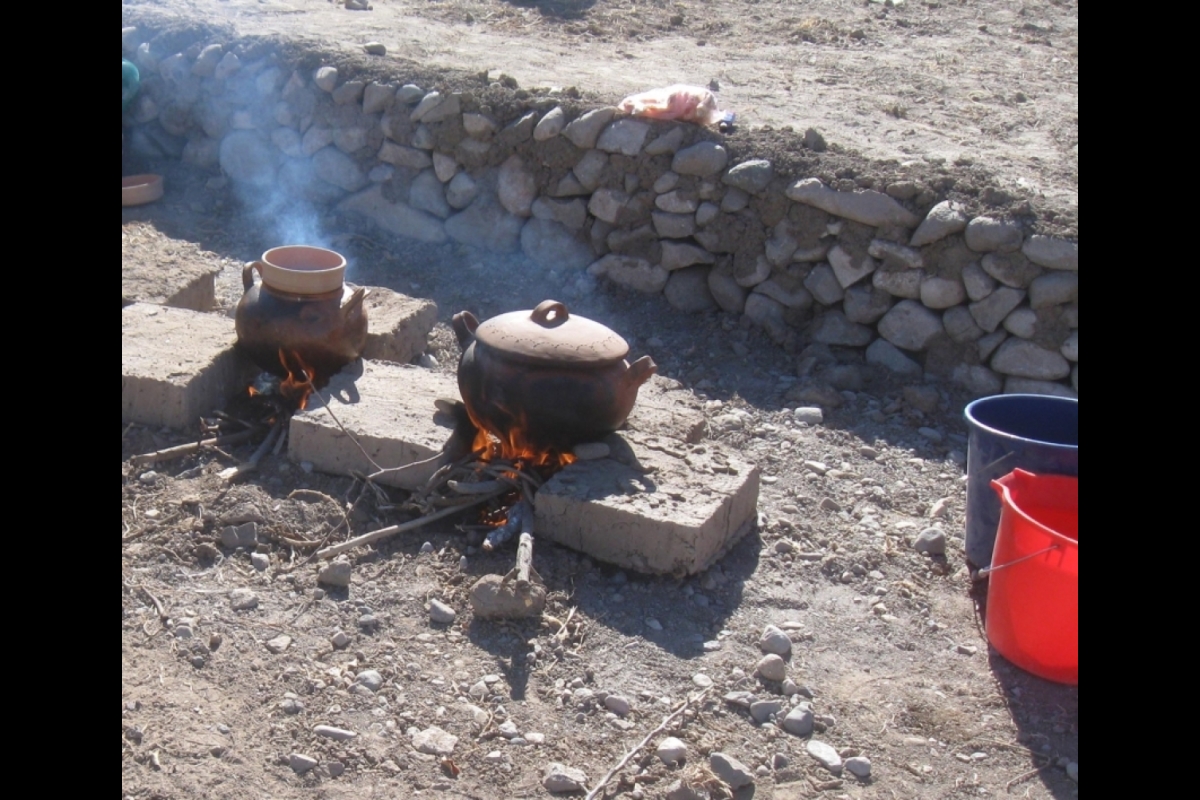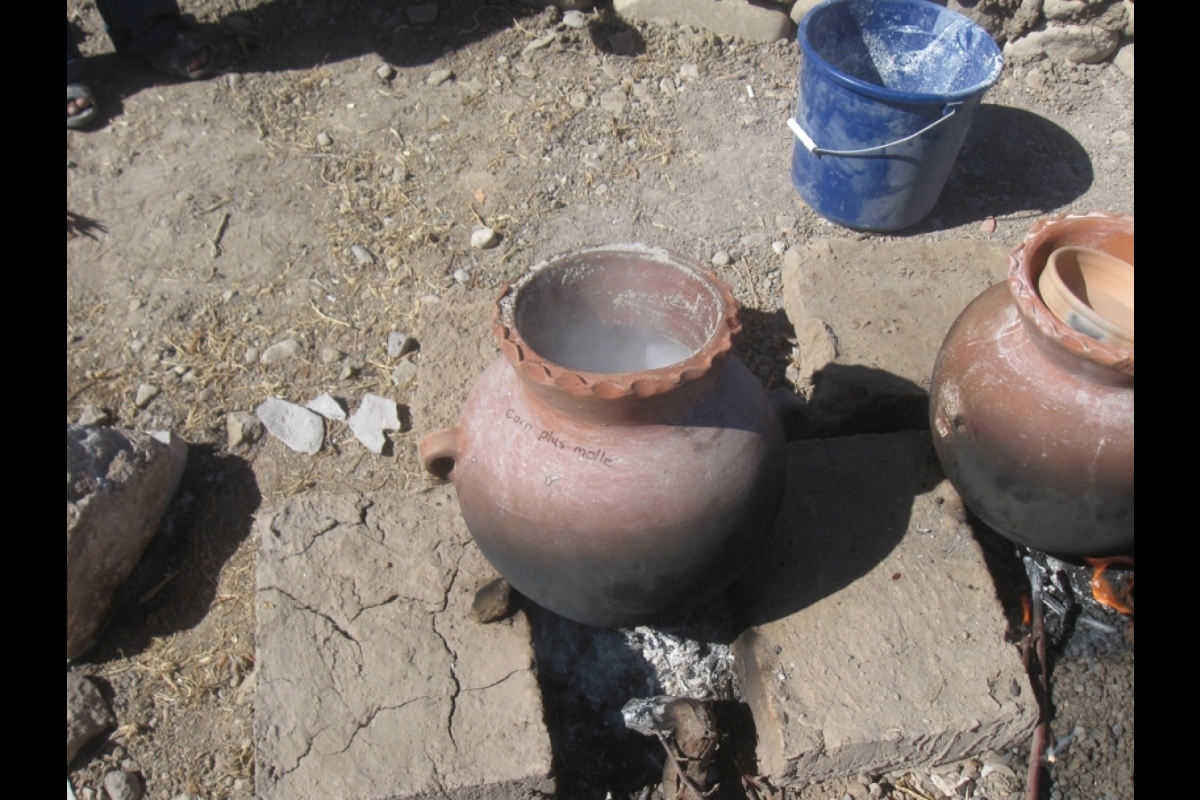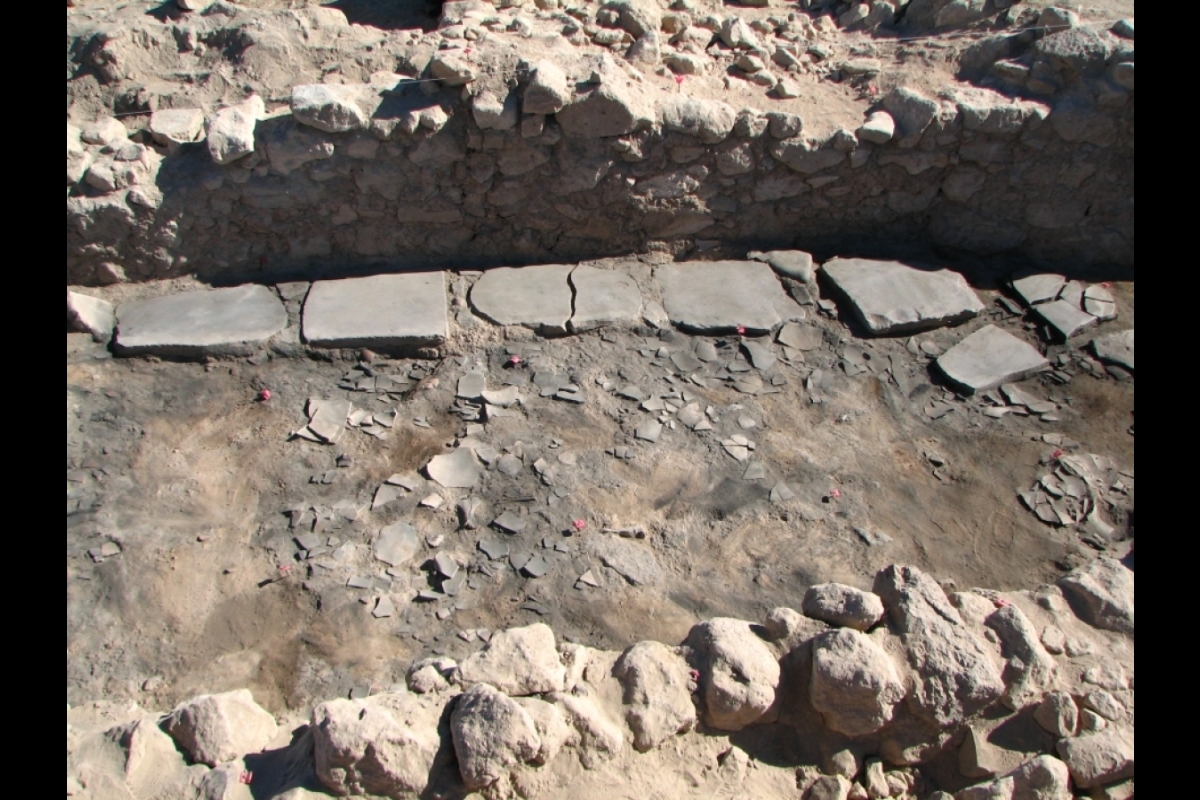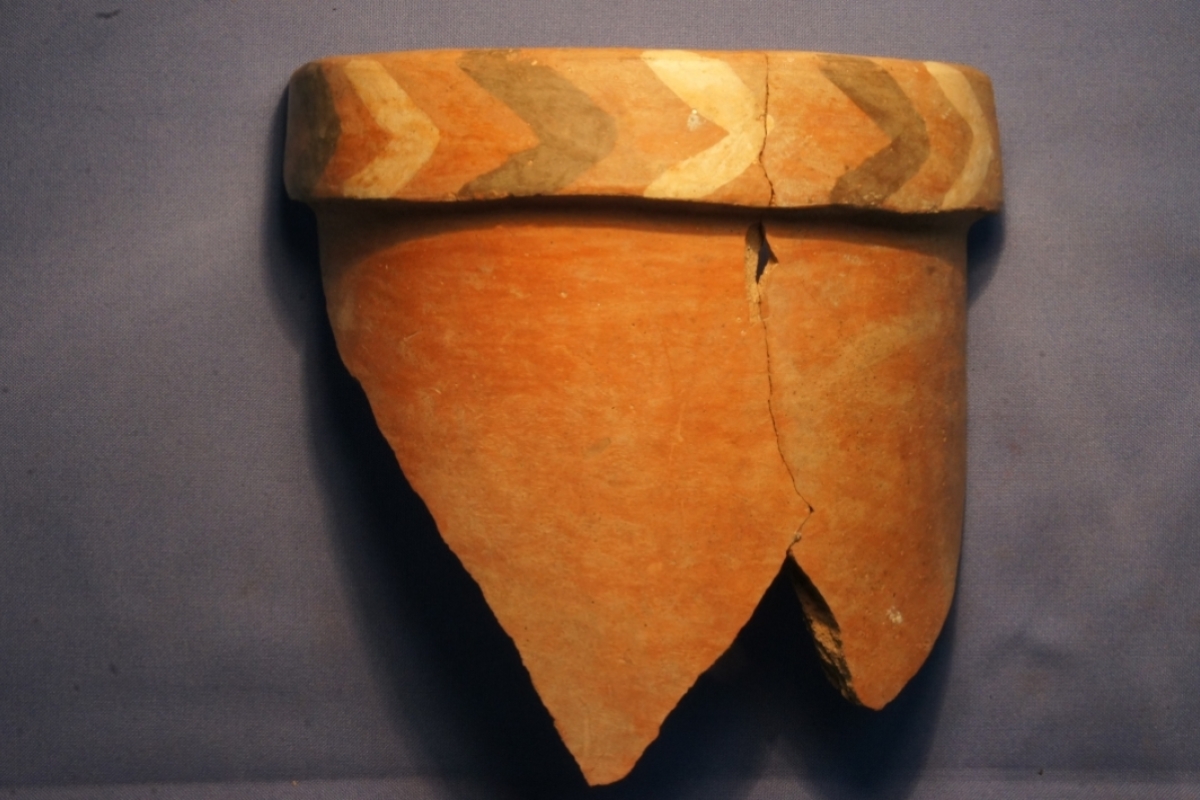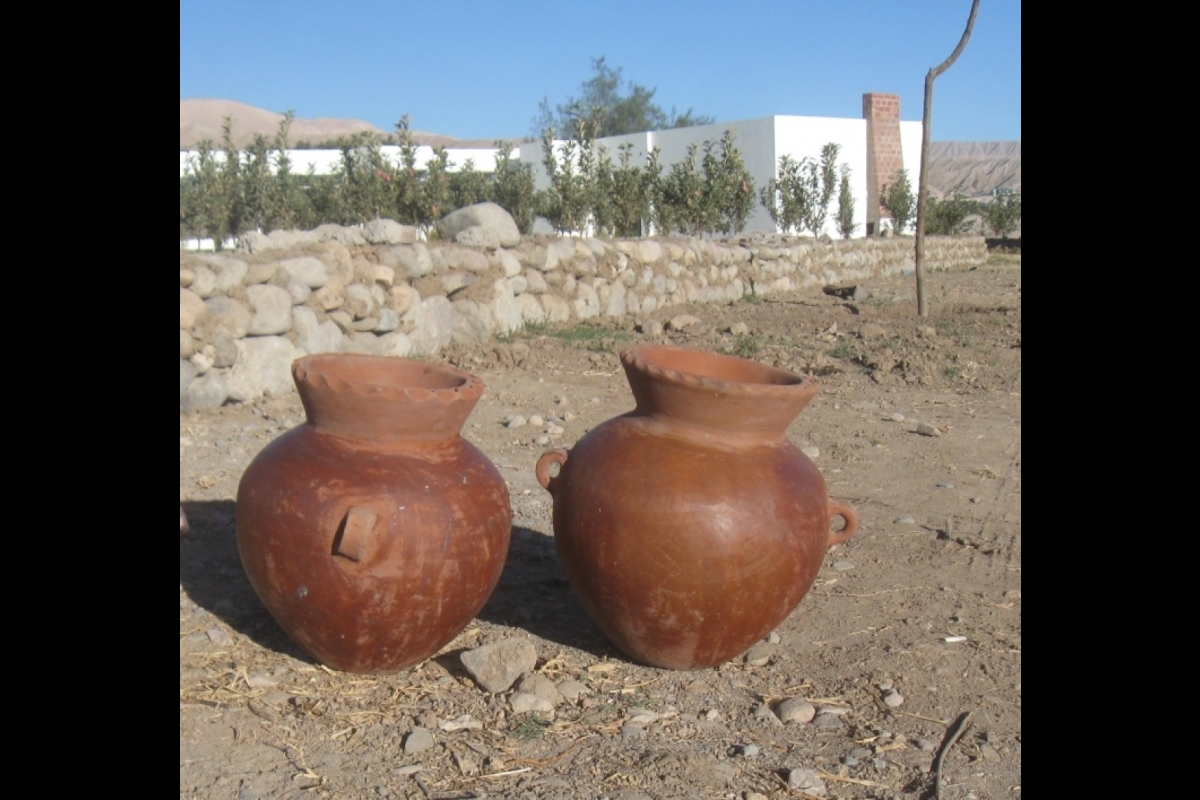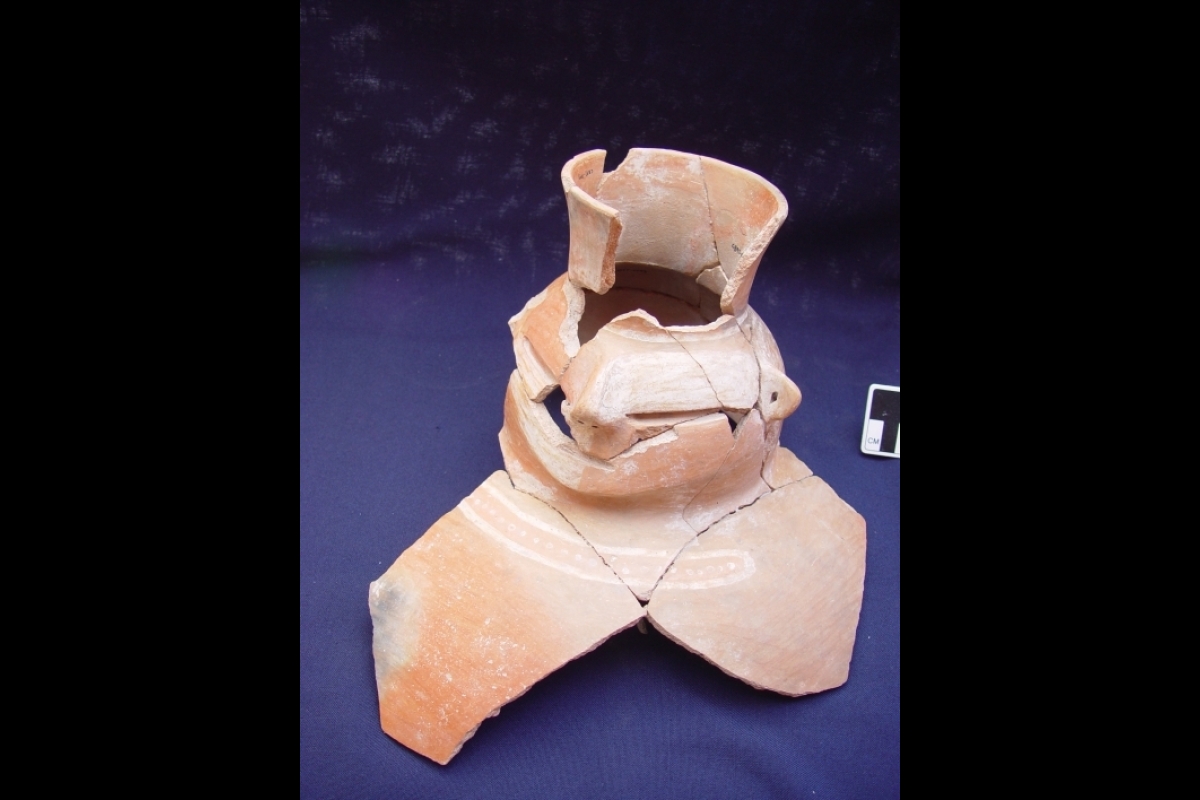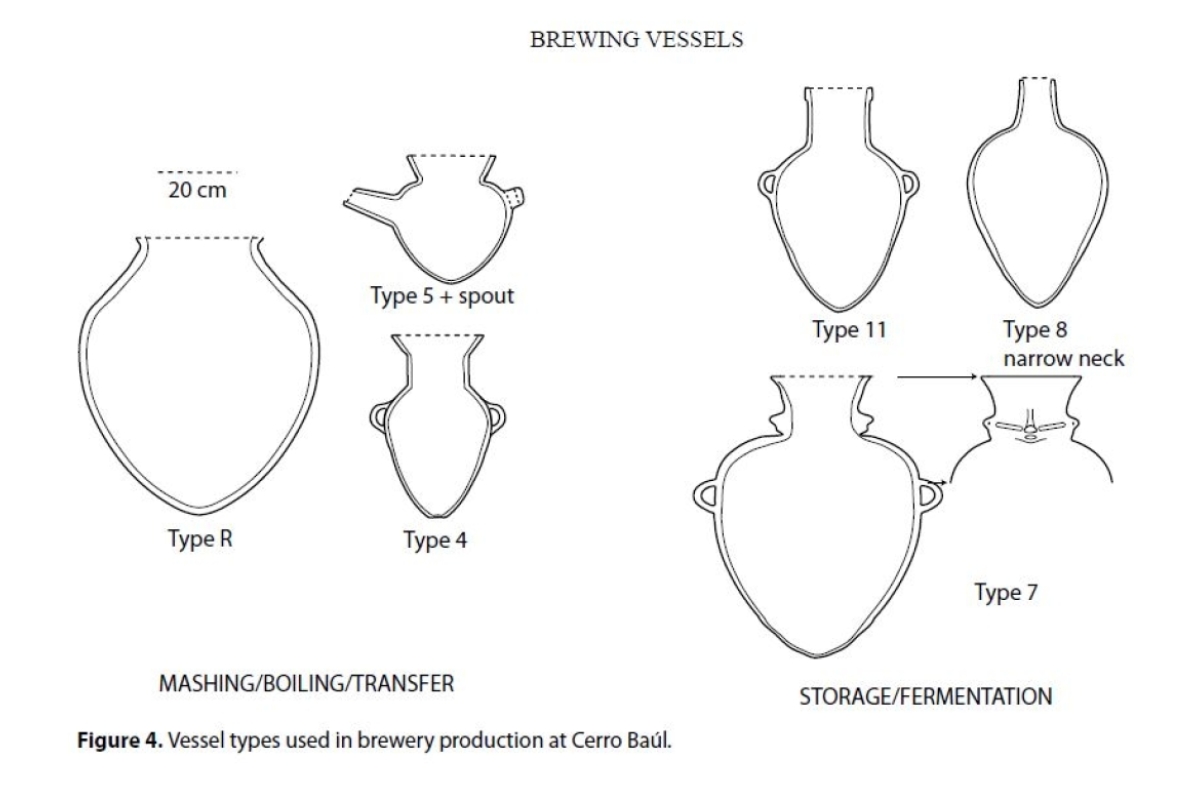How a special beer played a part in ancient Peruvian politics
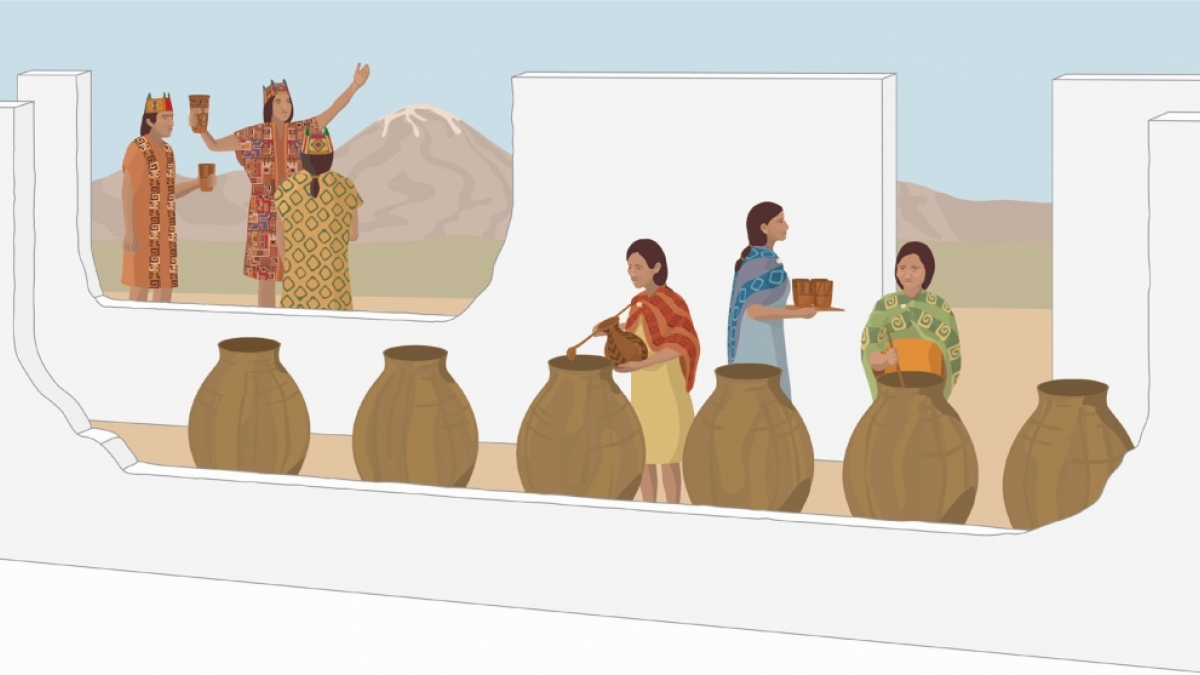
A re-creation of the brewery boiling room, staffed by elite female brewers. Drawing by J. Seagard, The Field Museum
Between 1,000 and 1,400 years ago, people living on the mountain of Cerro Baúl in southern Peru made beer as part of an early imperial project.
The people, who were part of the Wari Empire, went to great physical lengths to produce a very special beer: chicha de molle. Hundreds of pounds of ingredients, wood and the physical labor of about 100 people were needed. They would have also hauled 1,800 liters of water from the bottom of a 600-meter plateau to the brewery, explained anthropological archaeologist Donna Nash.
The process takes a month, sometimes more.
Nash is an associate professor at the School of Human Evolution and Social Change at Arizona State University and has been researching the Wari Empire since 1994. In the recent publication “Wari Beer: Production as Practice at the Cerro Baúl Brewery,” Nash and Ryan Williams, director of the School of Human Evolution and Social Change, explore the specific production sequences for the chicha made at the largest known state-run brewery in the Wari Empire.
So why make something that took so much time and resources?
As Nash and Williams explained, it wasn’t just for social reasons. Chicha was about politics and power. It would be used on a more regular basis by important Wari leaders, while community members would only be allowed to drink it on very special occasions during festivals for their labor.
“There’s a reason businesses have cocktail parties,” Nash said. She explained the use of chicha with the carrot-and-stick metaphor for reward and punishment.
“Empires don't always expand in a brutal fashion,” Nash said. “Sometimes they expand through carrots, like gifting finely made clothes to local leaders. Coming in and killing a bunch of people is a stick. And so with the beer, we are looking at a carrot.”
“If we look at empires, we usually focus on the gory details,” she said. “We have evidence for the Wari being mean and nasty in some places. However, in Moquegua, Peru, we have evidence for the Wari doing things more on the carrot side."
The chicha produced at Cerro Baúl is the earliest and largest brewery in the Andes, explain Nash and Williams. The brewery was at the administrative center of Cerro Baúl near other important buildings. It had several rooms for processing and a large number of vessels — more than any other site found in the area.
There were two types of chicha that were produced and probably mixed together at Cerro Baúl: molle (Peruvian pepper berry) and corn or maize-based chichas. Chemical analysis was done on the ceramic vessels at this brewery to determine specific ingredients.
Nash and her team did experiments of making traditional chicha in 2010 with Native women of Carumas in Moquegua. She explained the corn is ground into flour then boiled, and even the corn dregs are eaten.
Molle, however, is well-preserved; there were still piles of seeds at the site, Nash said.
"Molle grows in Arizona and is called the California Pepper Tree,” Nash said. “Its berries are sold as pink peppercorns. When they are freshly picked, they have a sugary resin, like a hard little bit of caramel stuck to it. The skin is like paper, and it’s a magenta color. So you pick it and rub it between your hands and the paper comes off and you’re left with the pit that has a little bit of resin on it. The goal is to dissolve the sugar but not get to the pepper because you don’t want your beer to taste weird.”
The archaeologists were also able to determine that the chicha was made by very elite women in this community. They found tupu pins that were used to attach shaws onto dresses of very elite, wealthy women at the brewery site, Nash said.
The Cerro Baúl brewery had multiple processing rooms for grinding, boiling, fermentation and storage. The large amount of ceramic vessels and grinding stones meant this was a very large-scale operation where dozens of people could work at one time, the researchers said in the paper.
“This research illustrates some of the ways in which a society of diverse constituencies forges a shared identity and maintains political unity across several centuries,” Williams said. “The Wari invested in institutions that created opportunities to bring opposing factions within their society together, and the brewery was one of them. So when we talk about how divided our nation is, and the forces pulling it apart, it is useful to look at how other societies have developed the means to overcome those internal conflicts to thrive.”
The article “Wari Beer: Production as Practice at the Cerro Baúl Brewery” is published in the January issue of Archaeology of Food and Foodways. Nash has another article titled “Dreg Deposits and Domestic Beer Production: Assessing the Ubiquity of Chicha Production in the Wari Empire,” published in Ethnoarchaeology.
More Arts, humanities and education

ASU’s Humanities Institute announces 2024 book award winner
Arizona State University’s Humanities Institute (HI) has announced “The Long Land War: The Global Struggle for Occupancy Rights” (Yale University Press, 2022) by Jo Guldi as the 2024…

Retired admiral who spent decades in public service pursuing a degree in social work at ASU
Editor’s note: This story is part of coverage of ASU’s annual Salute to Service.Cari Thomas wore the uniform of the U.S. Coast Guard for 36 years, protecting and saving lives, serving on ships and…

Finding strength in tradition
Growing up in urban environments presents unique struggles for American Indian families. In these crowded and hectic spaces, cultural traditions can feel distant, and long-held community ties may be…
